“In 100 days, more than 1,000,000 people were murdered. But the genocidaires did not kill a million people. They killed one, then another, then another…day after day, hour after hour, minute by minute. Every minute of the day, someone, somewhere, was being murdered, screaming for mercy. And receiving none.” – Kigali Genocide Memorial Centre
There is scene in the film Hotel Rwanda that sticks in my mind. As the terror and killing of the Rwandan Genocide spread, foreign nationals are being evacuated. As TV news cameraman Jack Daglish, played by Joaquin Phoenix, leaves for safety, hotel manager Paul Rusesabagina, played by Don Cheadle, tells him he needs to make the world aware of what is happening in Rwanda. Phoenix’s character delivers a devastating critique of international apathy:
“I think if people see this footage, they will say ‘oh, that’s horrible’, and then go on eating their dinners.”


The tragedy is that the international community responded in exactly that way. For one hundred bloody days, while international leaders argued over whether genocide was happening, Rwandans were slaughtered in the most barbarous manner imaginable. Admitting what was happening in Rwanda was genocide would have meant taking action the international community was unwilling to take. A visit to Rwanda requires acknowledgement of our collective failure to prevent the slaughter.
Before arriving in Rwanda, it struck me as ghoulish to visit sites where thousands of people died. After visiting the Genocide Memorial Centre in Kigali, however, I was convinced it was important to see the places where atrocities took place. Over the course of a couple of days I visited the site of two notorious massacres in Nyamata and Ntarama. Both rural locations about an hour outside of Kigali where people sought refuge in churches. I also spent half a day visiting the Genocide Memorial Centre and other sites in Kigali.
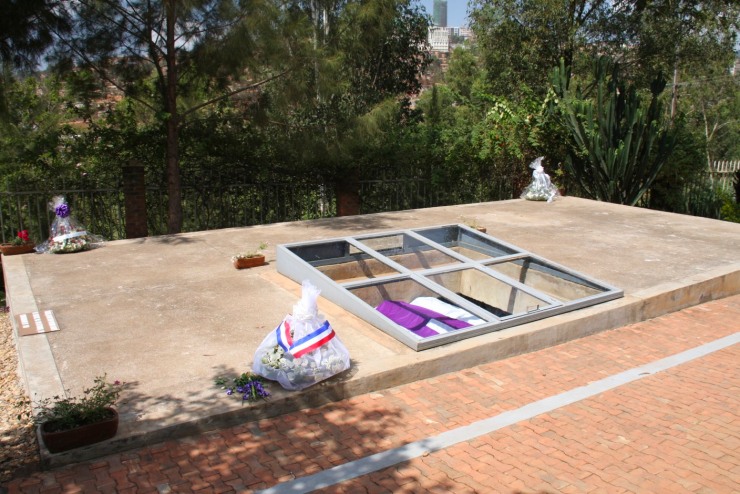

The Genocide Memorial Centre is a permanent memorial to all who died in the genocide, but it is also the site of a mass grave. Some 250,000 victims of the genocide are buried here. It is a powerful and profoundly moving experience to walk through the exhibition and grounds – which overlook the city. The most emotional part of the experience was seeing the hundreds of photographs of men, women and children murdered in the genocide. Taken in better times, these simple photos were donated by surviving family members, and are mute reminders that behind the horrendous numbers and lists of names were real people with real lives.
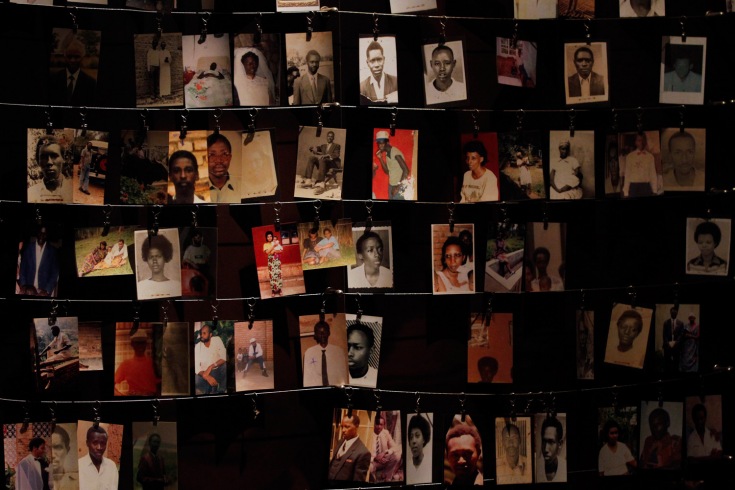
The Centre charts the disastrous colonial history of Rwanda, and the role of the Catholic Church, which proved decisive in preparing the ground for genocide. It explains the ethnic tensions and periodic killing that occurred after independence and prior to 1994. It explores the origins and execution of the genocide, bringing home the true horror of neighbour killing neighbour. The exhibition on the Rwandan Genocide is put into an international perspective with explanations of other genocides which have occurred – including the Holocaust and the Armenian Genocide.
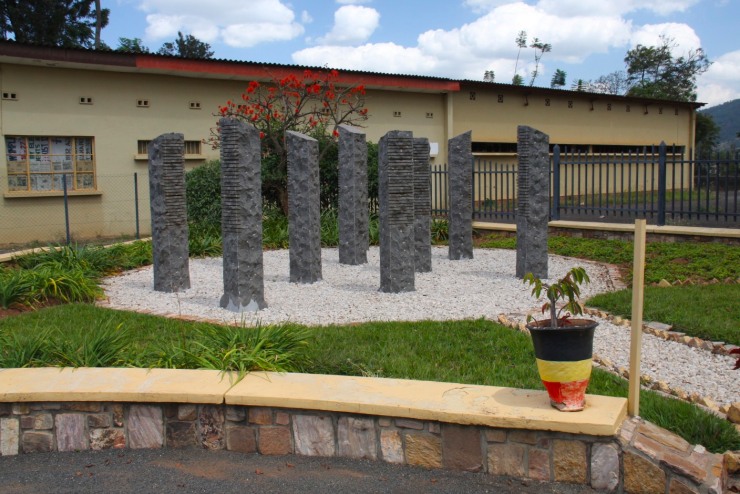
I aslo visited a former Rwandan military base in Kigali, the site of the murder of ten Belgian UN Peacekeepers. These murders were preplanned by Hutu fanatics and were carried out to force the withdrawal of the 450 Belgian soldiers who were part of the UN force. The soldiers had been sent to protect the Rwandan Prime Minister, a Tutsi, when they were captured by Hutu militias and taken to the military base. Once here four of them were immediately killed, the rest barricaded themselves in a room and fought off their attackers for several hours, before being killed and mutilated.
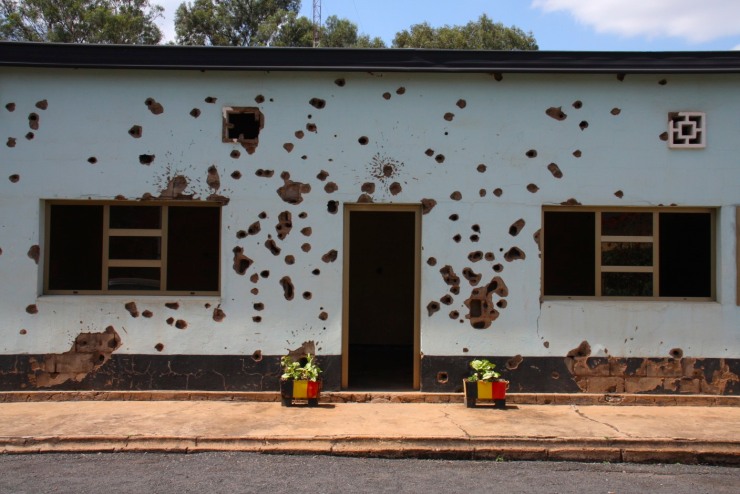
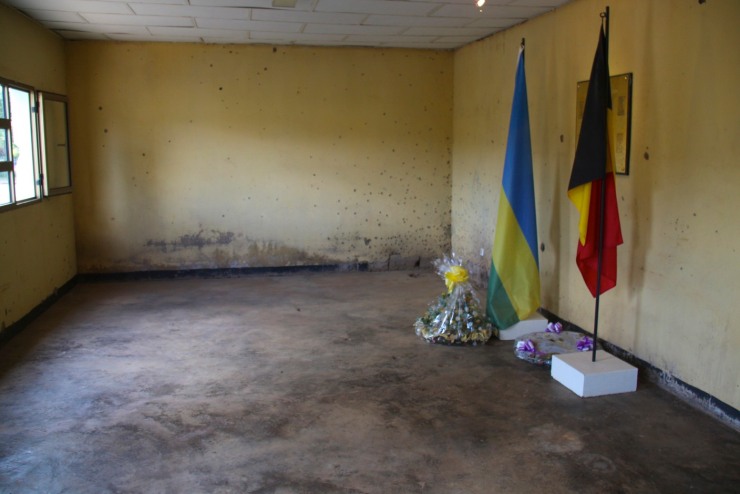

The site is now a simple but moving memorial to the soldiers. Ten pillars with notches marking the age of each soldier stand alongside the building where they took refuge. Bullet holes and blast marks from grenades remain as reminders of their terrible fate. Their deaths accelerated the process of international withdrawal from Rwanda, and fatally weakened the UN’s response to the growing catastrophe.
There is a wealth of information available on the genocide, so I haven’t gone into much detail on the background and actuality. For anyone wanting to know more about the origins and execution of the Rwandan Genocide, an excellent resource, which gives a critical voice to survivors, is the website Rwandan Stories.

Reblogged this on http://www.newsafrica.co.uk.
Thanks for the reblog, much appreciated.
Reblogged this on Oyia Brown.
Thanks for the reblog, much appreciated.
Shooting dogs is another movie made on the subject, clearly showing the inability, unwillingness and above all impossibility of peacekeeping forces to prevent the massacre…We then refused to acknowledge what happened, as we have been doing too little too late when the conflict was exported into neighbouring DRC. Lets hope the agreement between Kinshasa and M23 – and what is called the silence of Rwanda – brings peace closer in this troubled part of the world.
Shooting Dogs is a powerful film as well. It better portrays the reality when the UN evacuated all the foreign nationals, and left Rwandans to the ‘mercy’ of the militias. Bill Clinton admitted that as few as 5000 US troops deployed rapidly could have prevented 500,000 deaths, but they were scared after the embarrassment of Somalia.
A little-known tragedy. Swooped under the carpet at the time. Thank you for reminding the world of the “banality of evil” (Hannah Arendt)
Brian
The “banality of evil” indeed! Ironic that so many world leaders from that time have, in recent years, admitted to failing to put an end to the genocide. WHen I was there the Dutch Foreign Minster and a British Development Minister were touring the country and visiting a number of genocide sites.